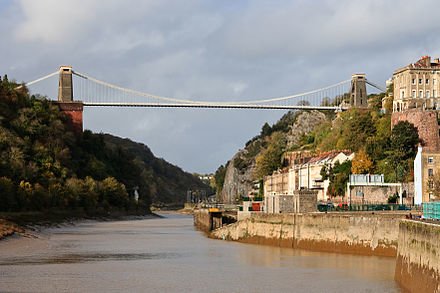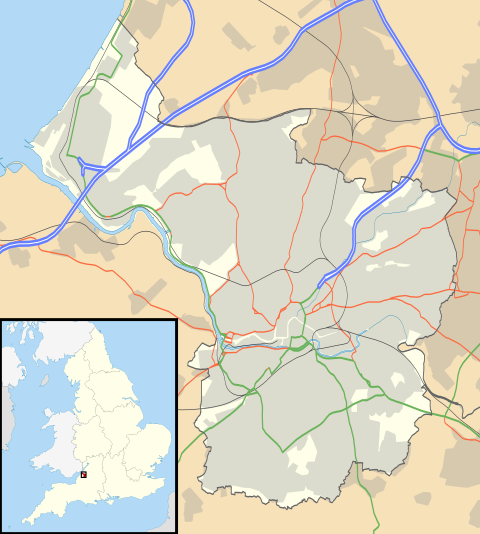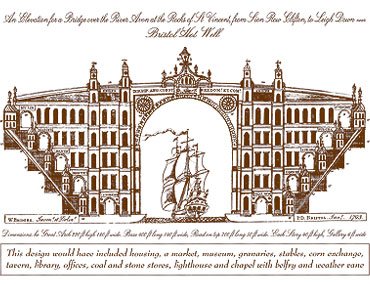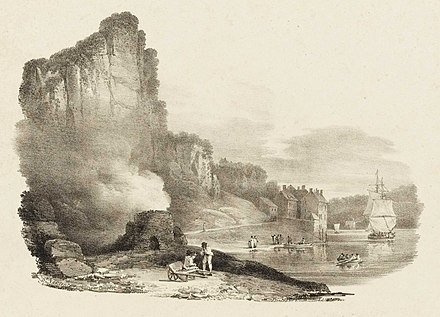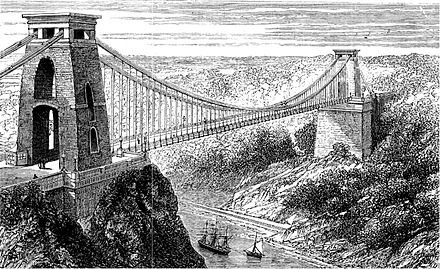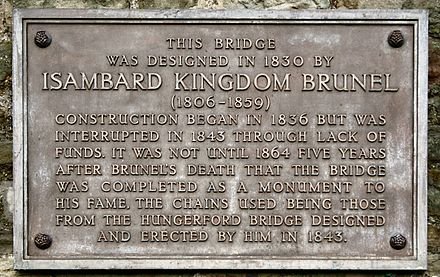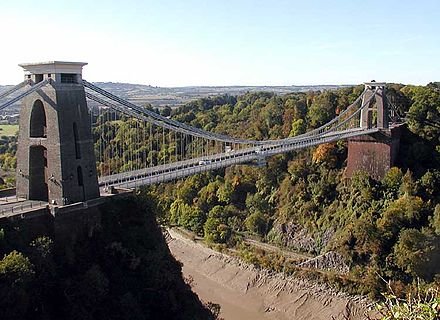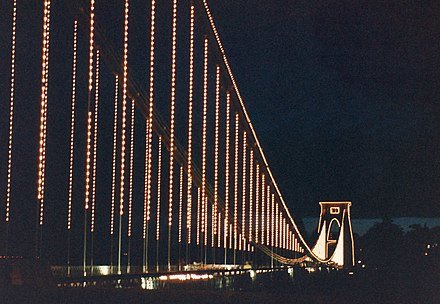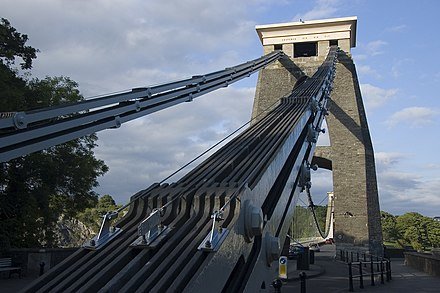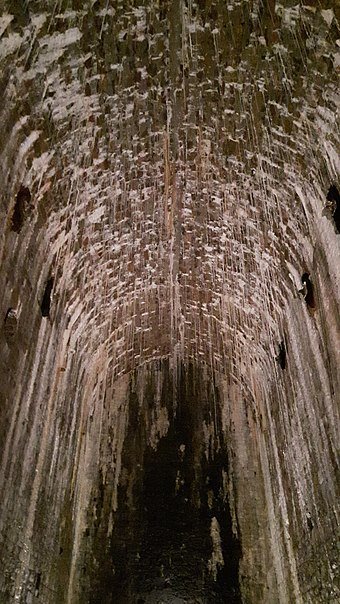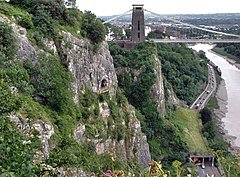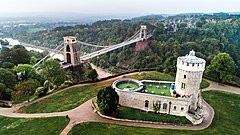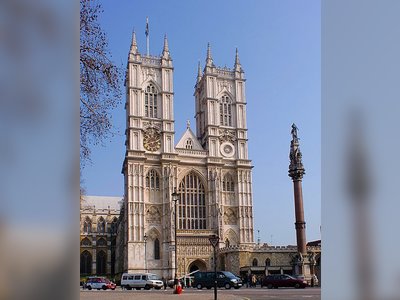British Heritage
Remember, Cherish, Learn.
beta
Clifton Suspension Bridge
Contribution of Clifton Suspension Bridge to British Heritage.
The Clifton Suspension Bridge, spanning the Avon Gorge and River Avon to connect Clifton in Bristol with Leigh Woods in North Somerset, stands as an iconic symbol of engineering prowess and architectural beauty in British heritage. Since its opening in 1864, the bridge has played a vital role in connecting communities, facilitating trade, and serving as a landmark of national importance. Its contribution to British heritage is multi-faceted, encompassing its legacy, engineering brilliance, cultural significance, and continued relevance in modern times.
The idea of constructing a bridge across the Avon Gorge dates back to 1753, but it was not until Isambard Kingdom Brunel, a visionary British engineer, proposed a design in the 1830s that the project gained momentum. Unfortunately, Brunel's original plan faced challenges, including financial constraints and the Bristol riots in 1831, which halted construction temporarily. After Brunel's death in 1859, the project was taken over by William Henry Barlow and Sir John Hawkshaw, who revised and completed the design.
The construction of the Clifton Suspension Bridge presented numerous engineering challenges due to the gorge's width and height, as well as the need to accommodate maritime traffic below. The final design incorporated triple chains and vertical wrought-iron rods to support the deck, ensuring the bridge's stability and strength. The innovative use of wrought iron and the elegant, Egyptian-inspired tower design set the Clifton Suspension Bridge apart as a remarkable engineering feat of the Victorian era.
The Clifton Suspension Bridge's completion in 1864 marked a significant moment in British history, celebrating the nation's engineering and architectural prowess. The bridge's majestic presence and innovative design represented the spirit of progress and industrialization prevalent during the Victorian era. As an enduring symbol of British ingenuity, the bridge has become a source of national pride, garnering admiration and recognition both within the United Kingdom and internationally.
The bridge also holds cultural significance, serving as an iconic landmark in Bristol and a representation of the city's identity. It has featured prominently in postcards, promotional materials, and films, making it a recognizable image associated with Bristol. Moreover, the Clifton Suspension Bridge's role in hosting cultural events, such as the first modern bungee jump in 1979 and the Concorde flight in 2003, has contributed to its status as a site of historical and cultural importance.
Over the years, the Clifton Suspension Bridge has evolved from a mere transportation structure to a vital part of Bristol's infrastructure. The bridge's success lies not only in its functional purpose but also in the preservation of its historical and architectural integrity. The Clifton Bridge Company initially managed the bridge, but it was later taken over by a charitable trust, ensuring its proper maintenance and long-term sustainability.
The bridge continues to serve as a major transport route, carrying millions of vehicles annually and connecting communities on either side of the Avon Gorge. Despite its historical origins, the bridge has adapted to modern demands, such as the installation of automated toll collection systems in 1975. Additionally, it has become a popular destination for tourists and locals alike, attracting visitors who marvel at its beauty and engineering brilliance.
In conclusion, the Clifton Suspension Bridge stands as a testament to British engineering innovation and architectural magnificence. Its completion in 1864 marked a pivotal moment in British heritage, showcasing the nation's advancement during the Victorian era. With its ongoing relevance, cultural significance, and vital role in Bristol's transportation network, the bridge remains a cherished and enduring symbol of British heritage, continuing to inspire awe and admiration in all who behold it.
Legacy and Engineering Brilliance
The idea of constructing a bridge across the Avon Gorge dates back to 1753, but it was not until Isambard Kingdom Brunel, a visionary British engineer, proposed a design in the 1830s that the project gained momentum. Unfortunately, Brunel's original plan faced challenges, including financial constraints and the Bristol riots in 1831, which halted construction temporarily. After Brunel's death in 1859, the project was taken over by William Henry Barlow and Sir John Hawkshaw, who revised and completed the design.
The construction of the Clifton Suspension Bridge presented numerous engineering challenges due to the gorge's width and height, as well as the need to accommodate maritime traffic below. The final design incorporated triple chains and vertical wrought-iron rods to support the deck, ensuring the bridge's stability and strength. The innovative use of wrought iron and the elegant, Egyptian-inspired tower design set the Clifton Suspension Bridge apart as a remarkable engineering feat of the Victorian era.
Contribution to British Heritage
The Clifton Suspension Bridge's completion in 1864 marked a significant moment in British history, celebrating the nation's engineering and architectural prowess. The bridge's majestic presence and innovative design represented the spirit of progress and industrialization prevalent during the Victorian era. As an enduring symbol of British ingenuity, the bridge has become a source of national pride, garnering admiration and recognition both within the United Kingdom and internationally.
The bridge also holds cultural significance, serving as an iconic landmark in Bristol and a representation of the city's identity. It has featured prominently in postcards, promotional materials, and films, making it a recognizable image associated with Bristol. Moreover, the Clifton Suspension Bridge's role in hosting cultural events, such as the first modern bungee jump in 1979 and the Concorde flight in 2003, has contributed to its status as a site of historical and cultural importance.
Success and Relevance in Modern Times
Over the years, the Clifton Suspension Bridge has evolved from a mere transportation structure to a vital part of Bristol's infrastructure. The bridge's success lies not only in its functional purpose but also in the preservation of its historical and architectural integrity. The Clifton Bridge Company initially managed the bridge, but it was later taken over by a charitable trust, ensuring its proper maintenance and long-term sustainability.
The bridge continues to serve as a major transport route, carrying millions of vehicles annually and connecting communities on either side of the Avon Gorge. Despite its historical origins, the bridge has adapted to modern demands, such as the installation of automated toll collection systems in 1975. Additionally, it has become a popular destination for tourists and locals alike, attracting visitors who marvel at its beauty and engineering brilliance.
Conclusion
In conclusion, the Clifton Suspension Bridge stands as a testament to British engineering innovation and architectural magnificence. Its completion in 1864 marked a pivotal moment in British heritage, showcasing the nation's advancement during the Victorian era. With its ongoing relevance, cultural significance, and vital role in Bristol's transportation network, the bridge remains a cherished and enduring symbol of British heritage, continuing to inspire awe and admiration in all who behold it.
- Clifton Suspension Bridgeen.wikipedia.org
